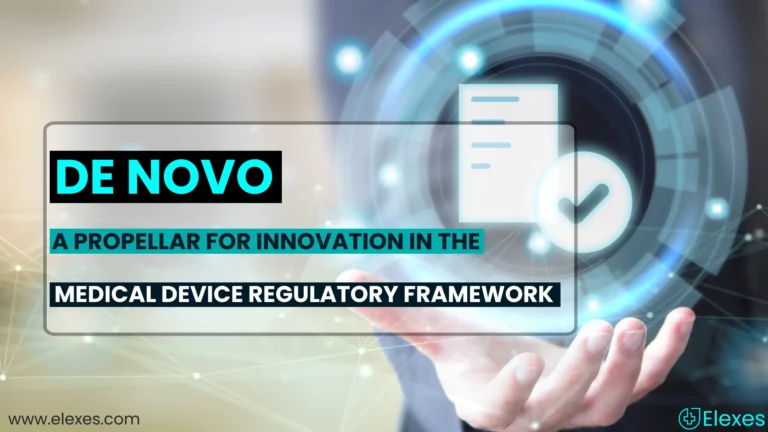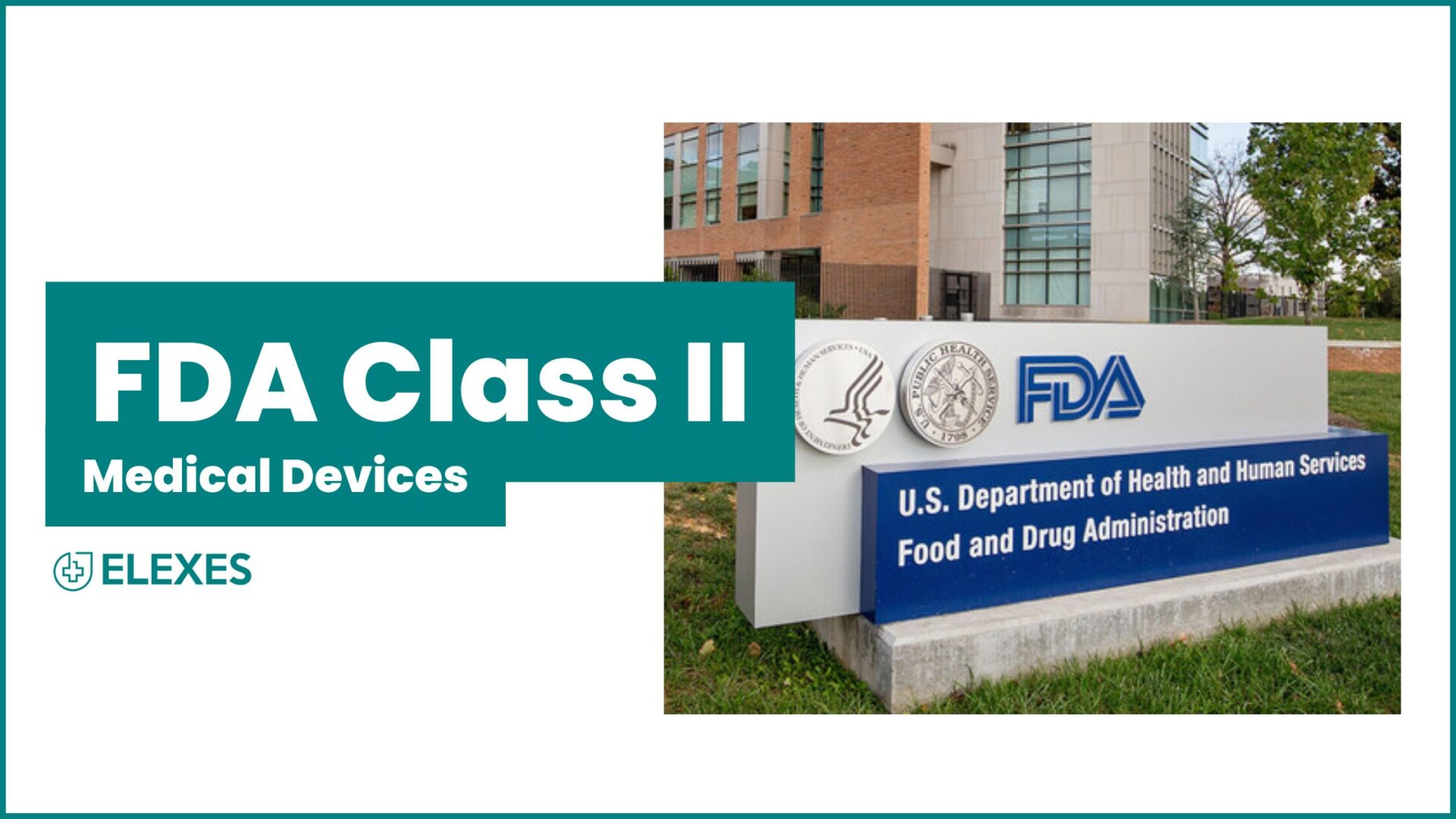Discover how the FDA’s De Novo pathway accelerates innovation in medical devices, simplifies regulatory approval, and helps bring innovative technologies to the market faster.
To understand why De Novo is a game-changer, it is important to look at how this pathway works and where it fits within the FDA’s regulatory framework.
As medical technology is evolving at a rapid pace, bringing innovative devices to market requires navigating complex regulatory pathways. The U.S. Food and Drug Administration (FDA) offers the De Novo classification process as a viable route for novel medical devices, especially those of low to moderate risk. This pathway not only streamlines regulatory approval but also promotes innovation by providing a clear framework for devices without a legally marketed predicate. This article will cover the De Novo pathway, its benefits, its application process and also how this pathway will play a crucial role in advancing medical technology.
What is the De Novo Pathway?
The De Novo pathway is an FDA regulatory route designed for novel medical devices that lack a legally marketed predicate and are deemed low to moderate risk. Established under the Food and Drug Administration Modernization Act of 1997, this process allows for risk-based classification of new devices into Class I or Class II, ensuring appropriate regulatory controls are applied to provide reasonable assurance of safety and effectiveness.
Comparison with Other FDA Pathways
- 510(k) Premarket Notification: This pathway is designed for medical devices that can be shown to be substantially equivalent to an already existing legally marketed device. Since it relies on an existing predicate, the review process is generally less complex and faster compared to the De Novo pathway.
- Premarket Approval (PMA): PMA is the most stringent regulatory pathway, required for Class III devices that support or sustain human life or present a potential unreasonable risk of illness or injury. It involves a comprehensive review of clinical data to ensure safety and effectiveness.
Understanding the FDA’s regulatory pathways is crucial for medical device approvals. Below is a quick comparison of 510(k), De Novo, and PMA to help innovators choose the right path.

When to Choose De Novo?
This pathway is particularly advantageous when:
● No existing device serves as a valid predicate.
● The device has a novel intended use or employs different technological characteristics that raise different questions of safety and effectiveness.
● Presents low to moderate risk
Now that we know when De Novo applies, let’s look at the key advantages it offers to medical device innovators.
Benefits of the De Novo Pathway
- Faster Market Access for Innovative Devices: In comparison to the PMA pathway, the De Novo process has a more streamlined regulatory route for novel devices and it requires less time to market. Establishing new device classifications enables subsequent devices of the manufacturer to utilize the 510(k) pathway, further expediting market entry.
- Lower Regulatory Burden Compared to PMA: Unlike the PMA process, De Novo does not require extensive clinical trials and long-term post-market studies unless necessary for safety and effectiveness. This can save significant time and costs compared to a PMA.
- Encourages Innovation in Digital Health, AI, and Wearable Technologies: The De Novo pathway has been instrumental in bringing cutting-edge technologies to market.
- Competitive Advantage for Early Entrants: Being the first to establish a new product category through De Novo provides a competitive edge, as future competitors will need to compare to the newly classified device. De Novo approval can set the standard for performance, safety, and labeling.
- Flexibility in Data Requirements: The FDA provides a risk-based approach that allows manufacturers to submit only the necessary data to demonstrate safety and effectiveness. This is often less burdensome than a PMA, which requires extensive clinical data.
Here are few De Novo approvals underscore the FDA’s commitment to advancing novel AI-driven digital health solutions that enhance disease detection and patient monitoring.
● OMRON Healthcare’s AI-Powered Blood Pressure Monitors: In October 2024, OMRON received De Novo approval for home blood pressure monitors featuring the IntelliSense™ AFib algorithm. This AI-driven technology analyzes the Pressure Pulse Wave during measurement to detect atrial fibrillation (AFib), a leading cause of stroke.
● IMVARIA’s Fibresolve AI Biomarker for Lung Fibrosis: In January 2024, IMVARIA obtained FDA marketing authorization for Fibresolve through the De Novo pathway, a digital biomarker solution utilizing AI to non-invasively diagnose lung fibrosis, particularly idiopathic pulmonary fibrosis (IPF). This marks the first FDA authorization of a diagnostic tool for lung fibrosis.
● Notal Vision’s Home OCT Device: In May 2024, Notal Vision received De Novo authorization for SCANLY®, a patient-operated home optical coherence tomography (OCT) device. Integrated with an AI-based analyzer, it enables remote monitoring of retinal conditions like neovascular age-related macular degeneration (nvAMD) by capturing and analyzing retinal images.
While the benefits are clear, successfully navigating the De Novo process requires a strategic approach. To get your medical device to the market, follow the below steps for the De Novo submission process.
Steps to Navigate the De Novo Process
- Eligibility Assessment: Ensure that your medical device is eligible for the De Novo pathway by assessing its risk level and confirming the absence of a legally marketed predicate. This involves a thorough analysis of the device’s intended use, technological characteristics, and risk profile.
- Pre-Submission Meeting: Engage with the FDA early through a Pre-Submission to obtain feedback on your device’s regulatory strategy, study design, and any potential concerns. This collaborative approach can clarify expectations and streamline the review process.
- Submission Preparation: Compile a comprehensive De Novo request that includes:
a) Administrative Information: Device name, applicant details, and intended use.
b) Device Description: Detailed information on device design, components, principles of operation, and proposed environment of use.
c) Classification Information and Supporting Data: Justification for the proposed classification (Class I or II), including a discussion of why general controls or general and special controls provide reasonable assurance of safety and effectiveness.
d) Performance Data: Non-clinical and clinical data supporting the device’s safety and effectiveness, such as bench testing, non-clinical data, animal studies, and clinical trial results.
e) Addressing proposed Special Controls (if Class II): Implement proposed special controls to mitigate identified risks.

4. FDA Review and De Novo Grant: The FDA’s review process involves several stages:
a) Acceptance Review: An initial check to ensure the submission is complete and meets the necessary requirements.
b) Substantive Review: A thorough evaluation of the submitted data to assess the device’s safety and effectiveness. Further, during this stage, the FDA assesses legally marketed device types to determine whether a similar device already exists. This classification review helps verify whether the device qualifies for the De Novo classification by confirming that no existing legally marketed device of the same type is available.
Review Timeline: The FDA aims to make a decision on De Novo requests within 150 calendar days, though the actual timeline may vary based on the complexity of the device and the quality of the submission, considering the FDA holds that shall happen during the substantive review. For each hold, the FDA provides 180 calendar days for the sponsor to address the deficiencies provided by the FDA.
Upon a favorable review, the FDA grants the De Novo request, classifying the device into Class I or II, allowing it to be marketed in the U.S.
Despite its advantages, the De Novo pathway comes with certain challenges. Fortunately, there are ways to overcome these hurdles efficiently.
Challenges and Solutions
Common Hurdles (NOT AN EXHAUSTIVE LIST)
- Lack of robust clinical data can lead to delays or denials.
- Failing to identify and address potential risks comprehensively.
- Limited interaction can result in misunderstandings and misaligned expectations.
Tips for Successful Navigation
- Design and conduct well-structured clinical studies to generate compelling evidence of safety and effectiveness.
- Ensure labeling is accurate, comprehensive, and aligned with the intended use and user population.
- Participate in Pre-Submissions and request feedback to address potential concerns proactively.
By tackling these challenges proactively, manufacturers of medical devices can use the De Novo pathway to drive innovation forward while staying compliant with regulations. At Elexes, we simplify the De Novo process by helping clients during the De Novo submission process and also overcome such challenges. Visit Elexes.com to get expert support!
Conclusion
The De Novo pathway is a critical enabler of medical innovation, providing a clear regulatory route for novel, low-to-moderate-risk devices. By simplifying the process and encouraging technological advancements, it is helping to shape the future of healthcare. For companies working on breakthrough medical solutions, this pathway can be a smart route to bringing new products to market.
Need guidance on navigating the De Novo process? Connect with Elexes for your regulatory journey to be smooth and successful.
FAQs
1. What is the cost of a De Novo submission?
The standard FDA fee for FY2025 is $162,235 and $40,559 for small businesses. The cost of this submission is revised every year.
2. How long does the De Novo process take?
Depending on the complexity of the device, the review time is roughly around 150 to 200 calendar days.
3. Does a De Novo classification mean the device is automatically cleared for 510(k)?
No, but once a De Novo request is granted, it establishes a new classification regulation. Future devices of the same type can use this classification and submit 510(k) applications instead of repeating the De Novo process.
4. What happens if the De Novo request is denied?
If the FDA denies a De Novo request, the device will either:
Require a PMA submission if it is classified as high-risk (Class III), or the manufacturer may need to revise the submission to provide additional evidence supporting a Class I or II classification.





















